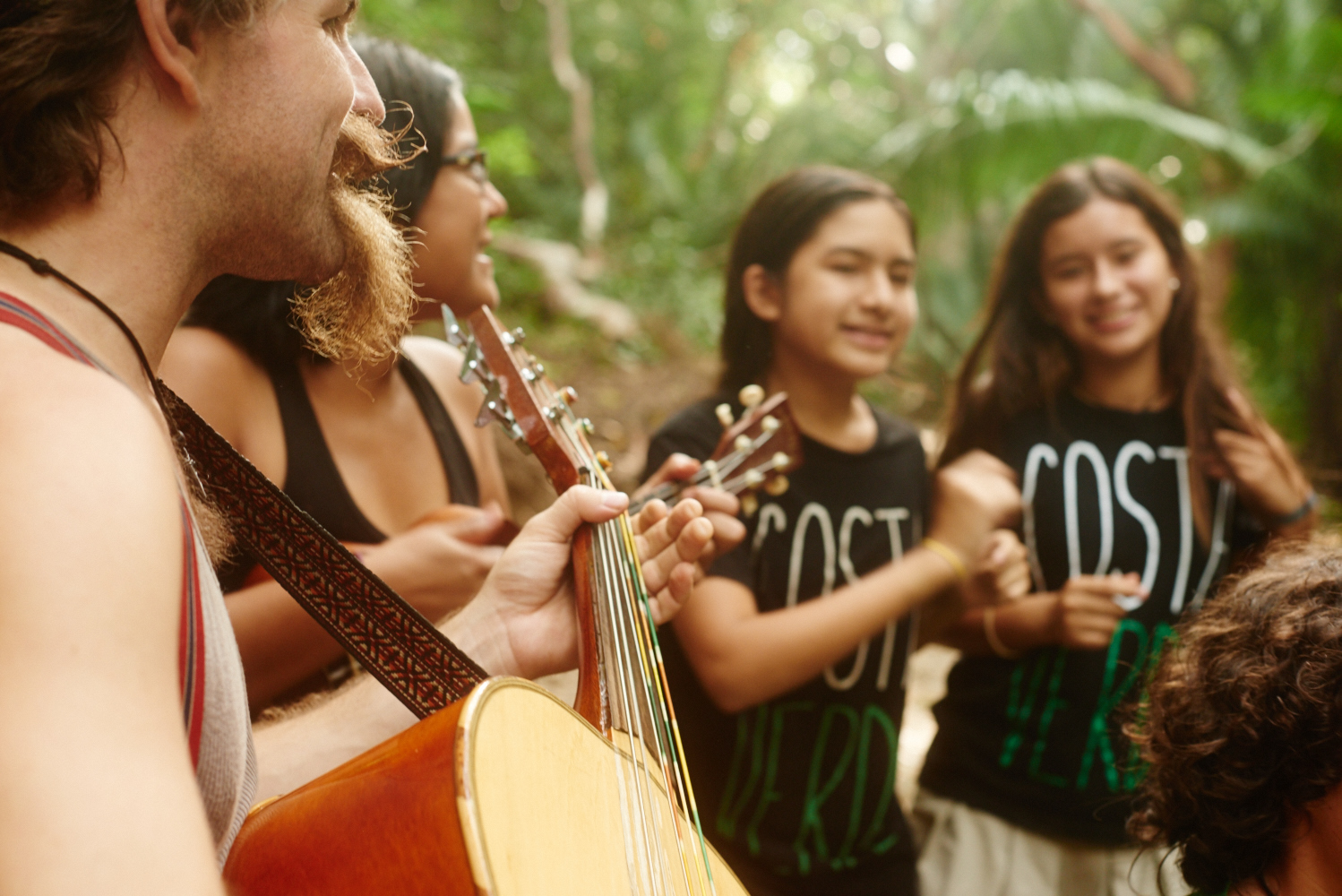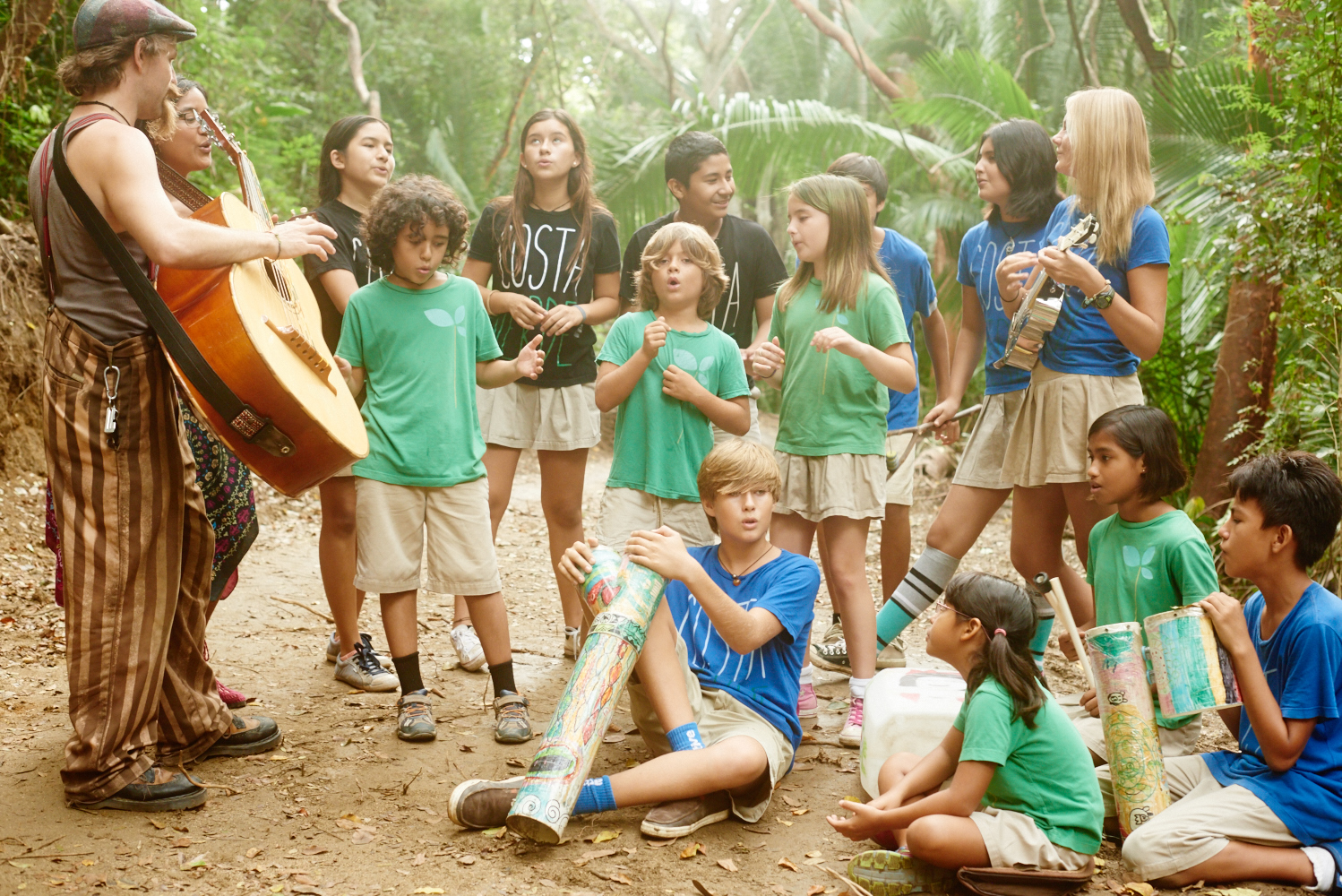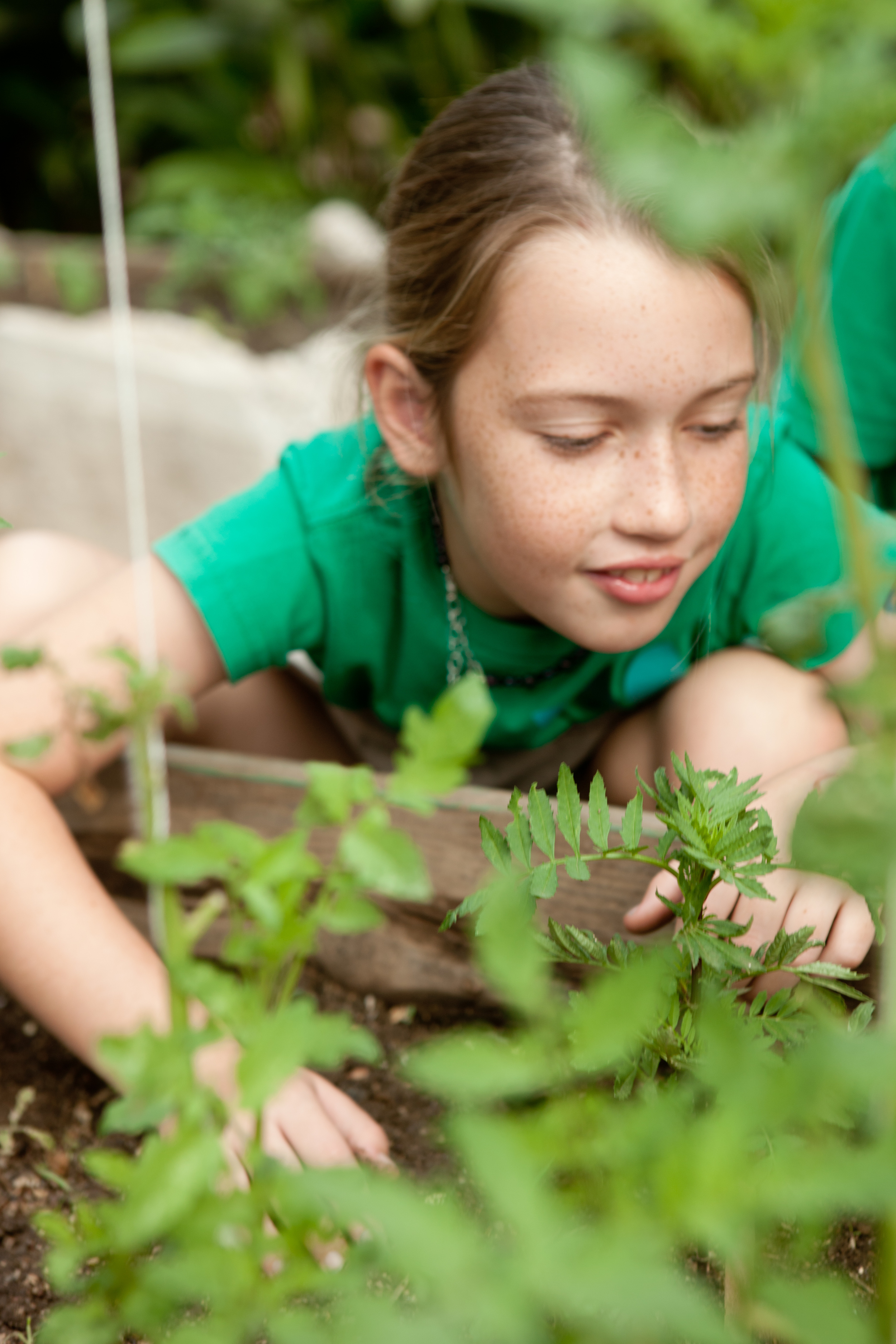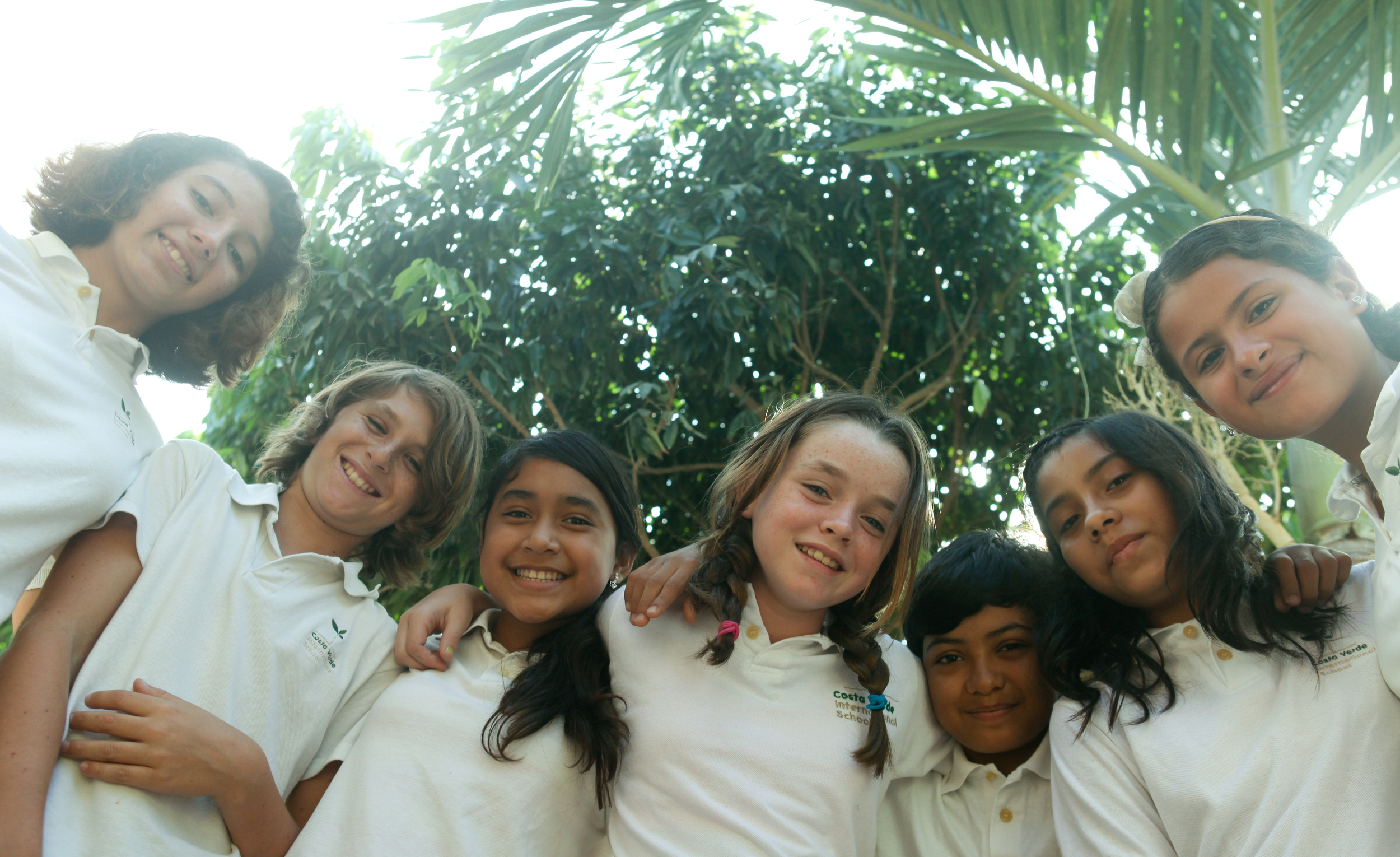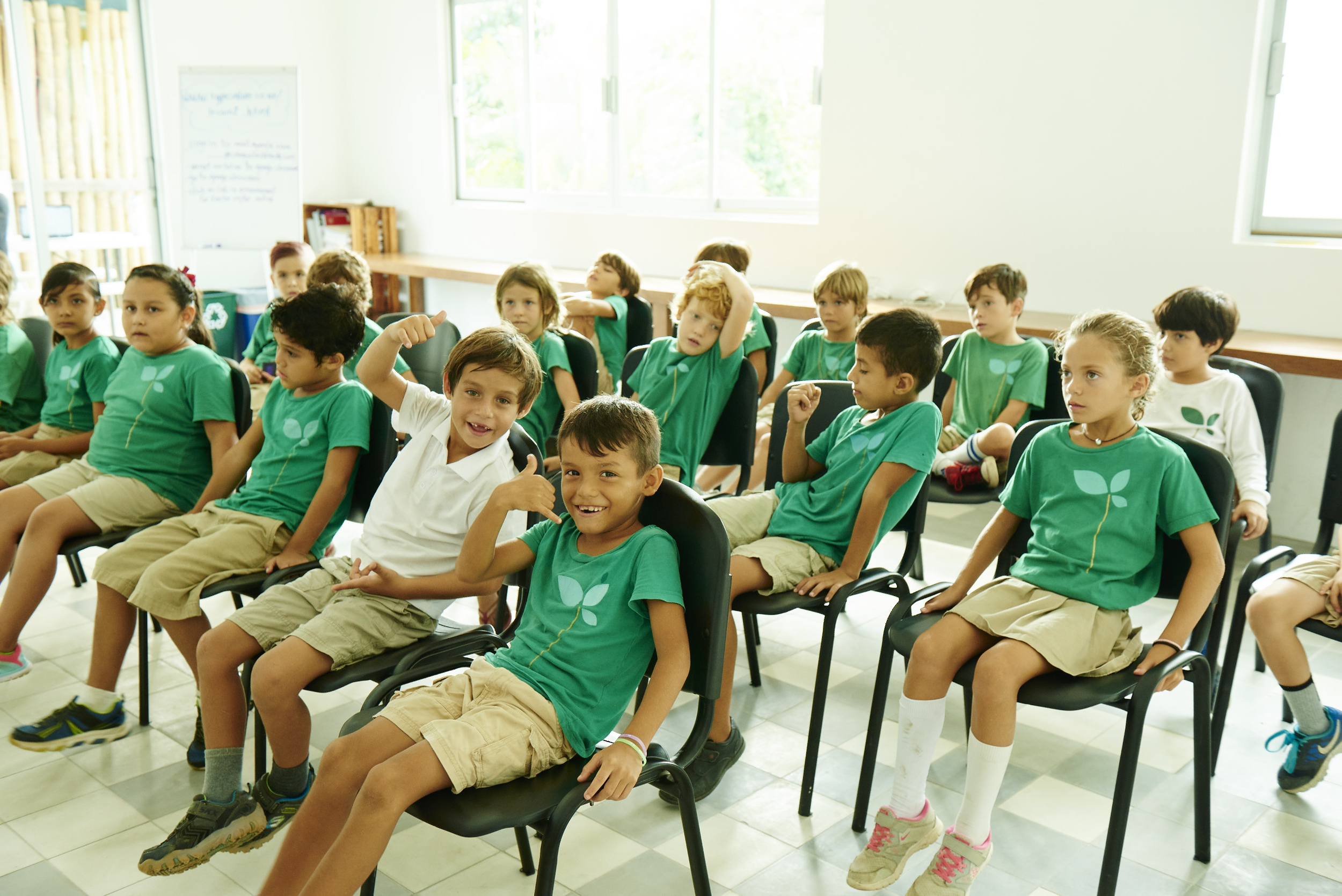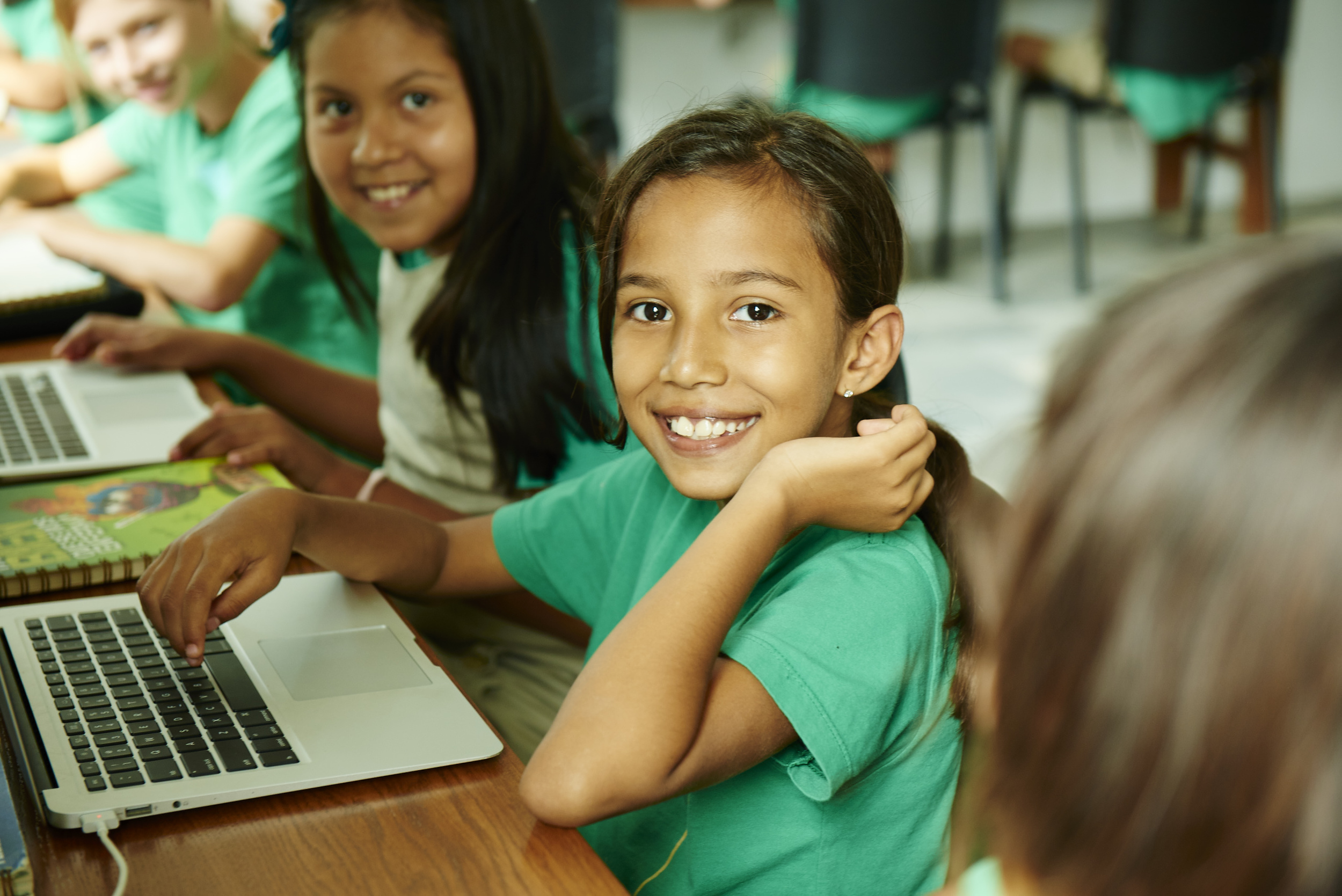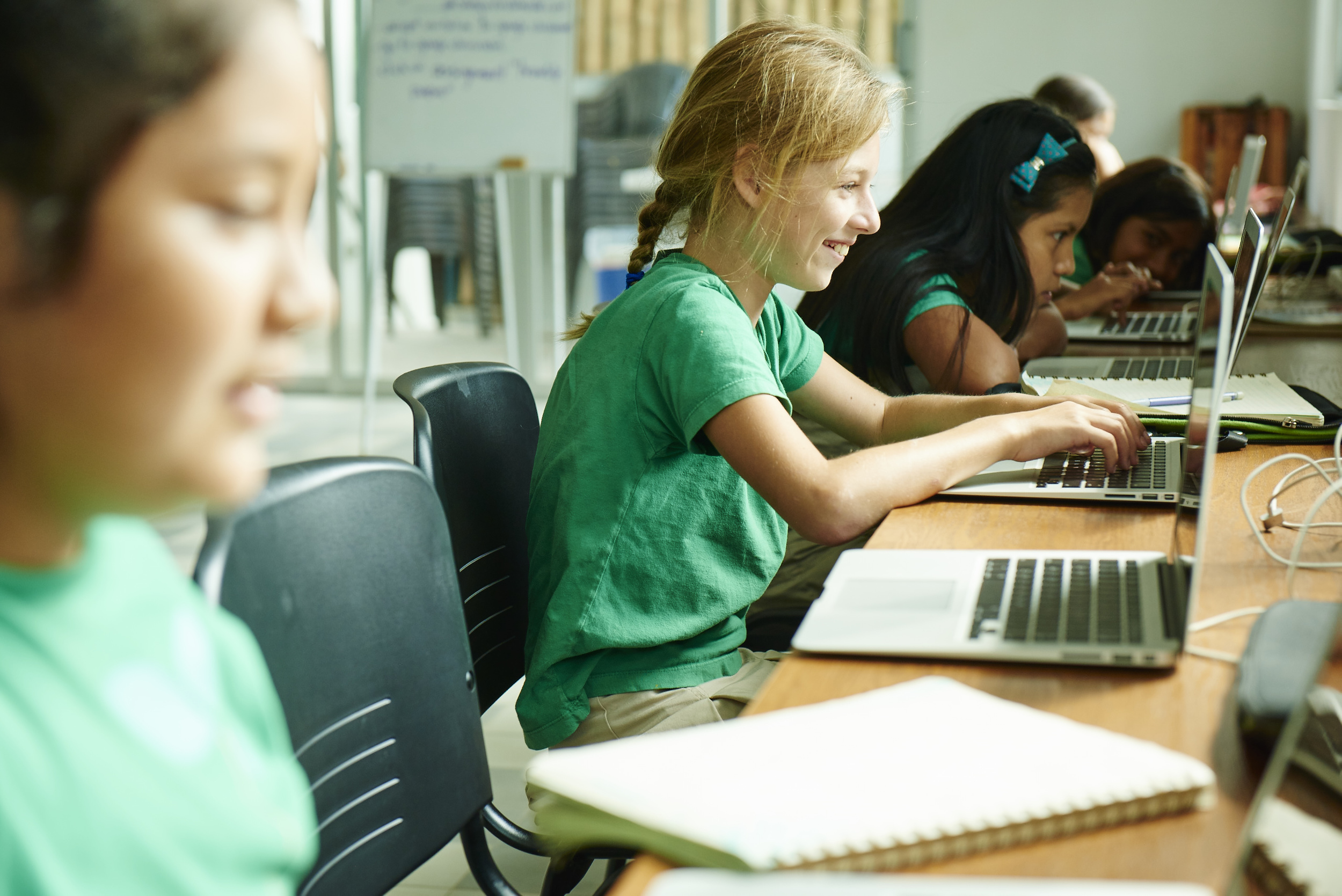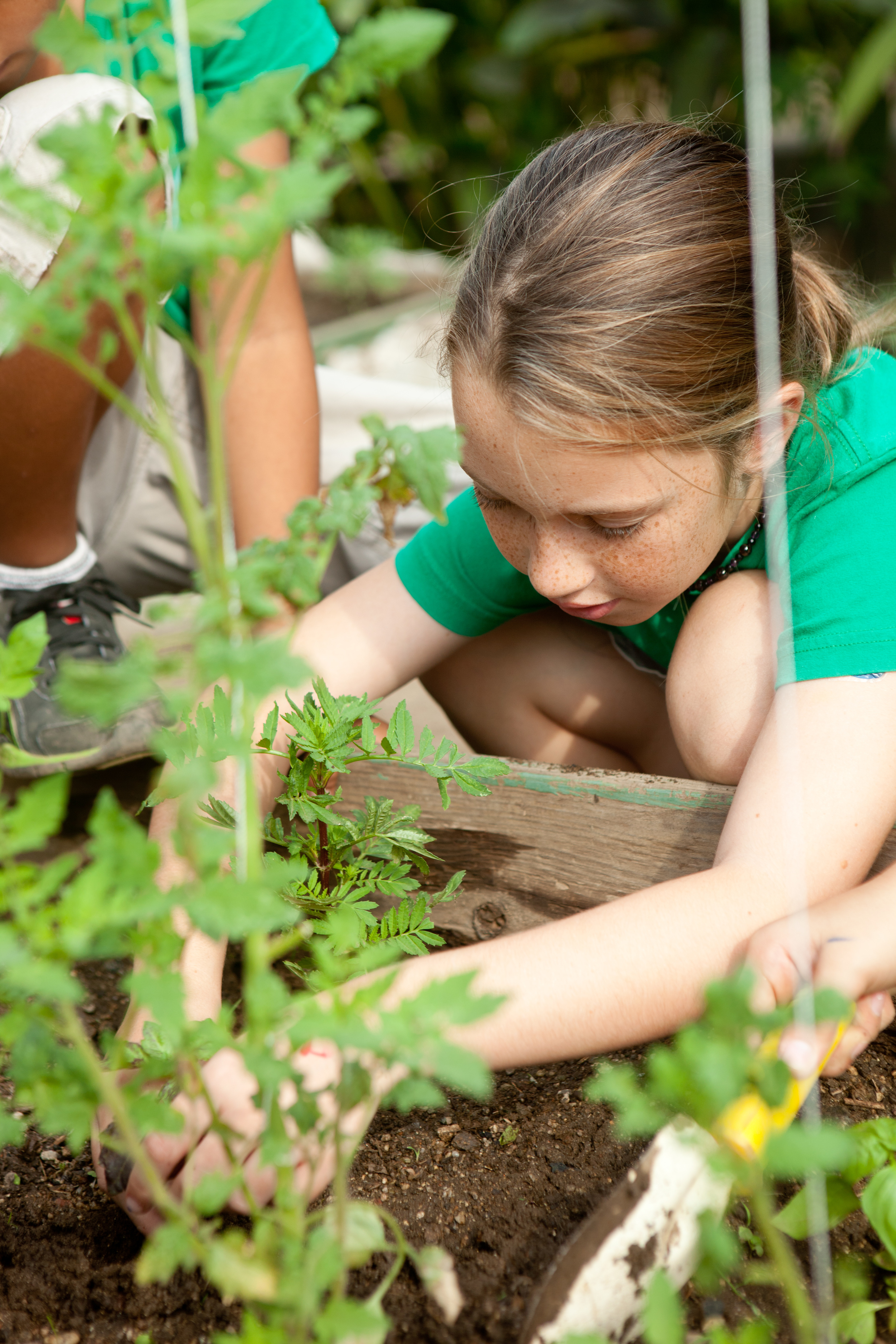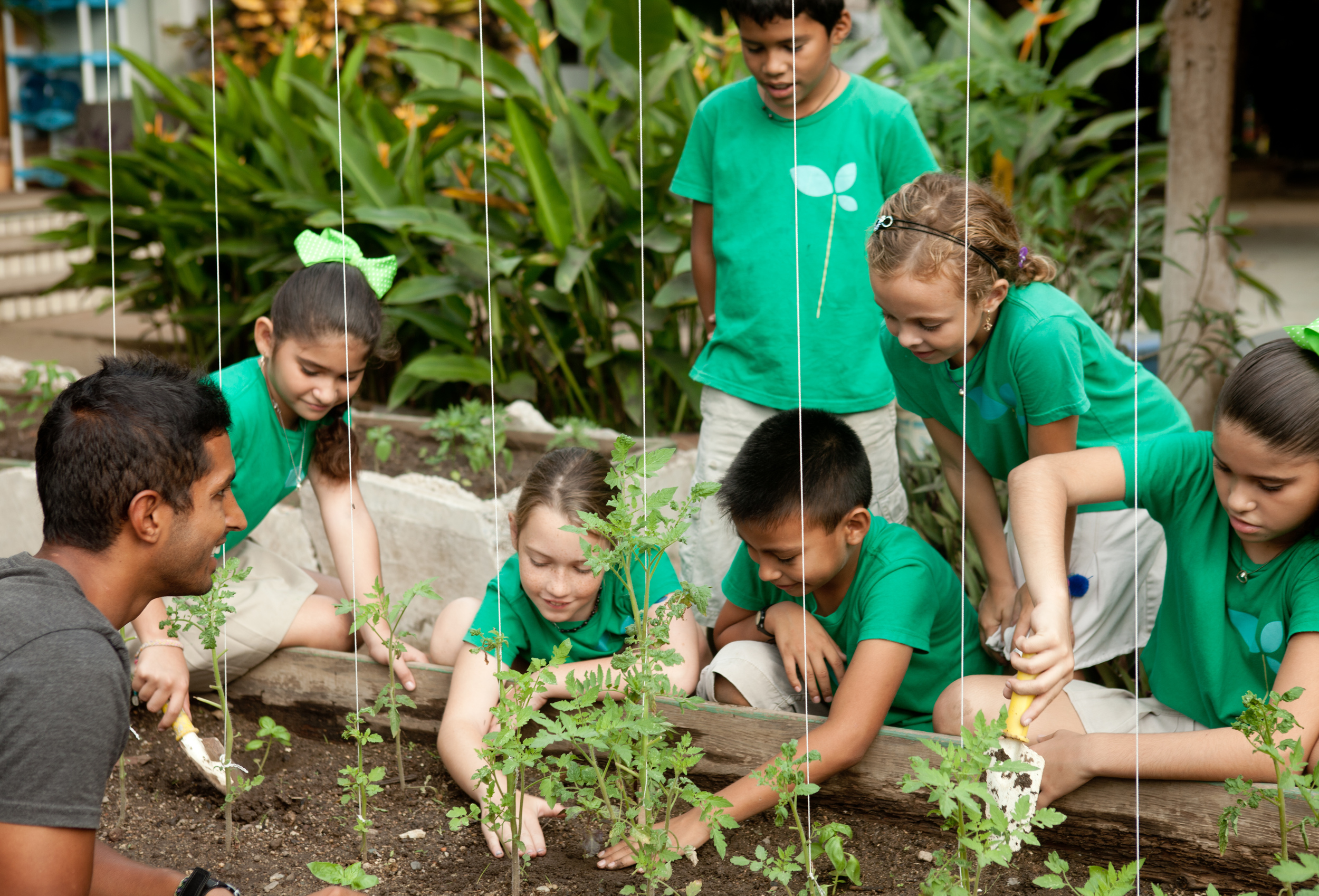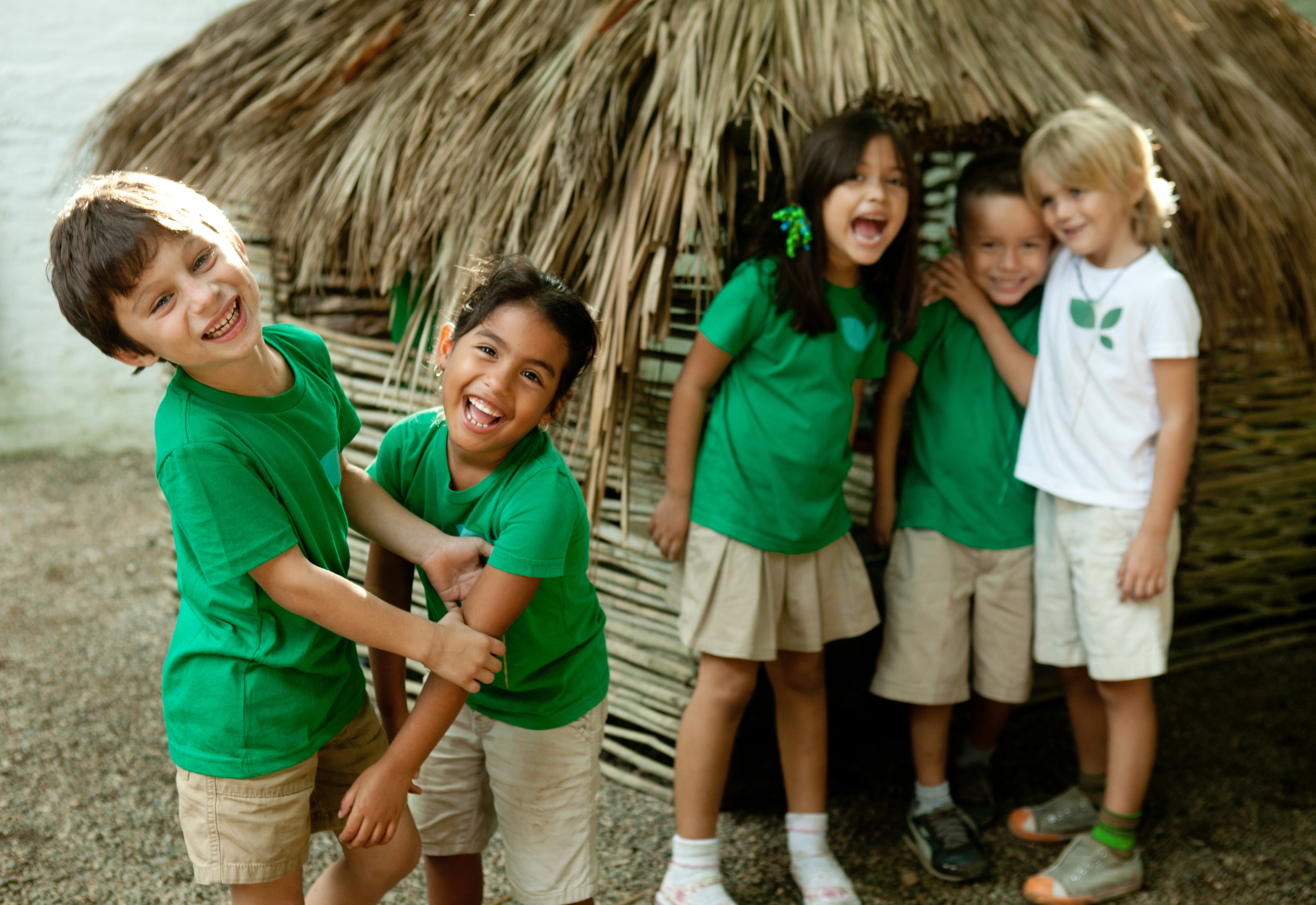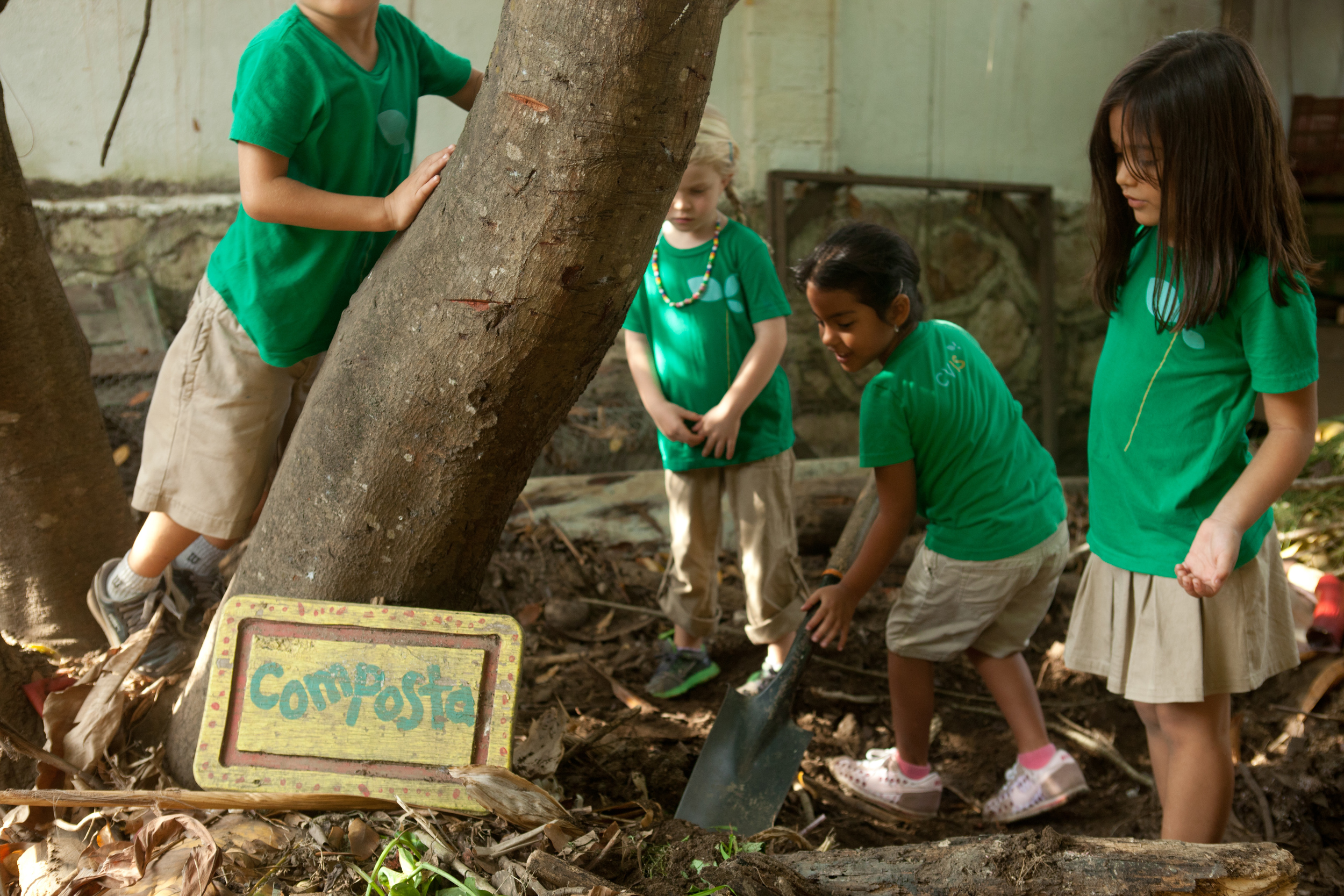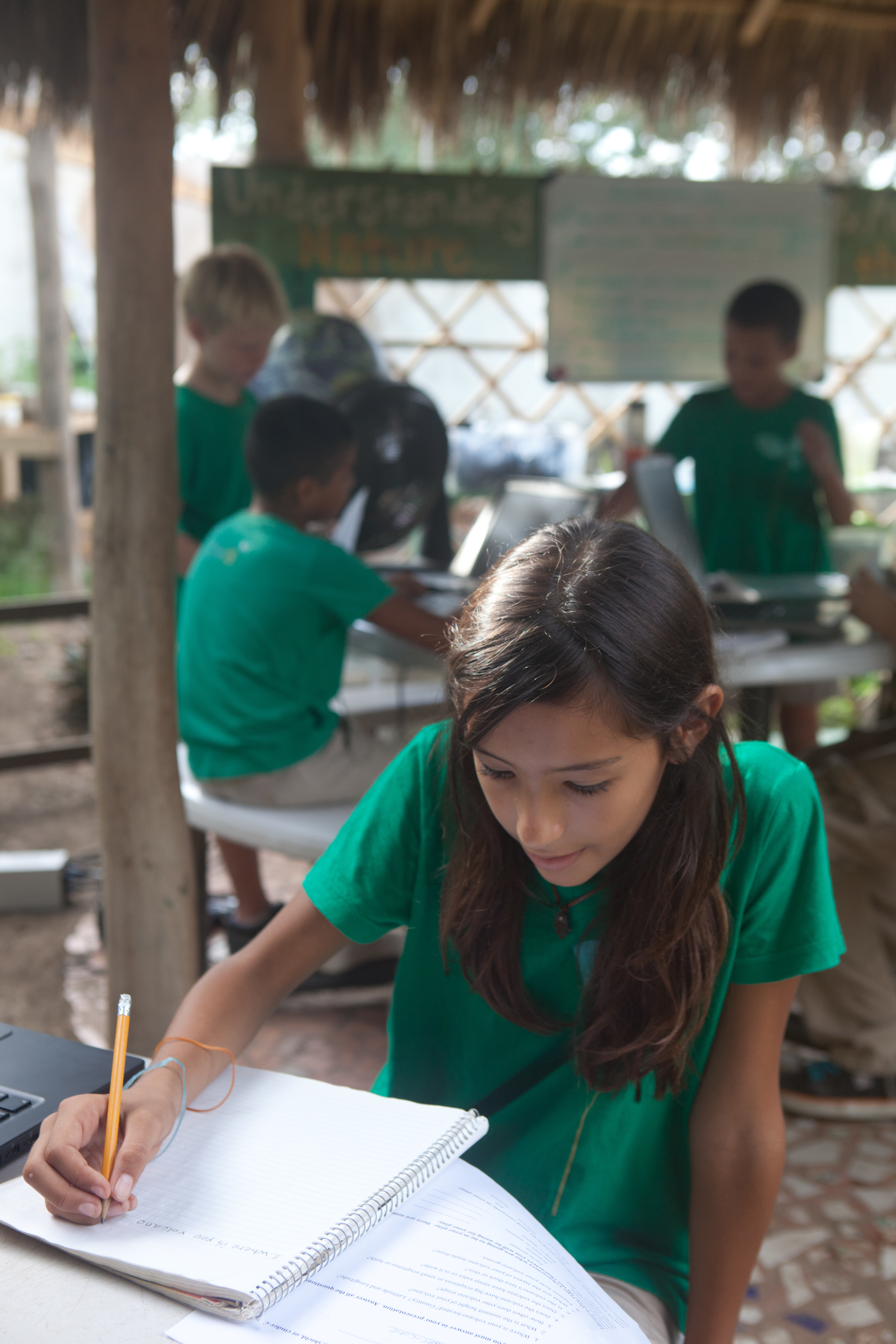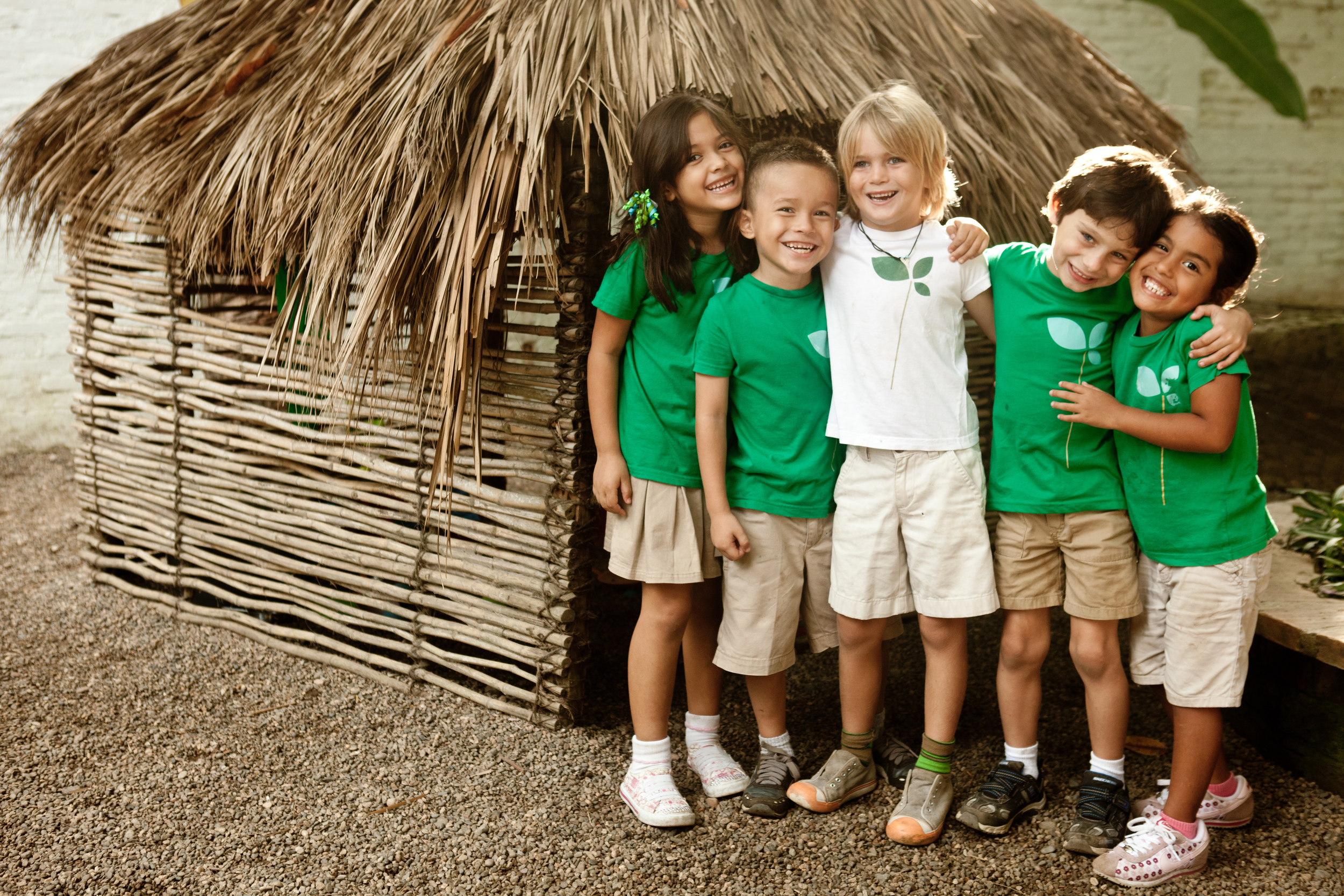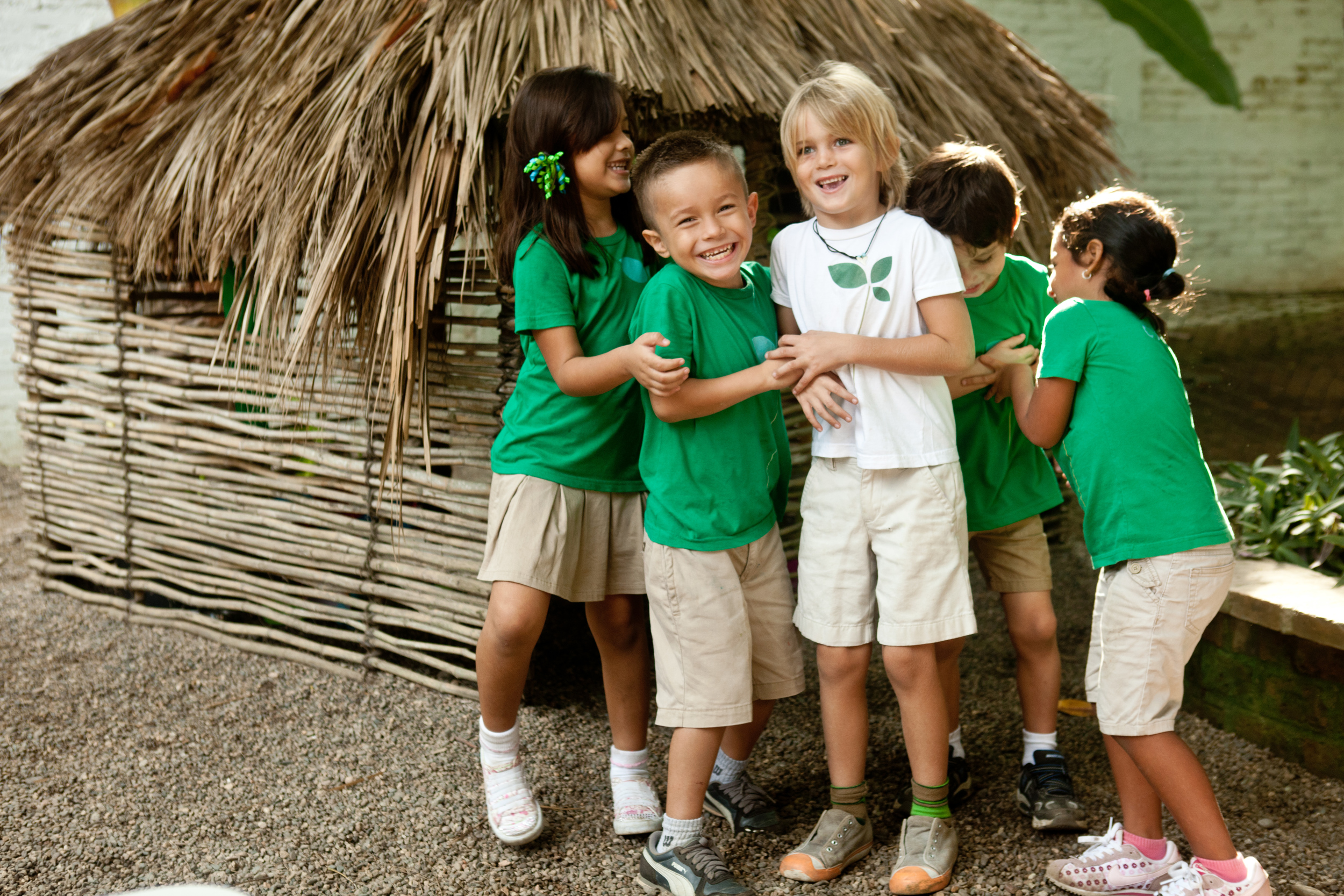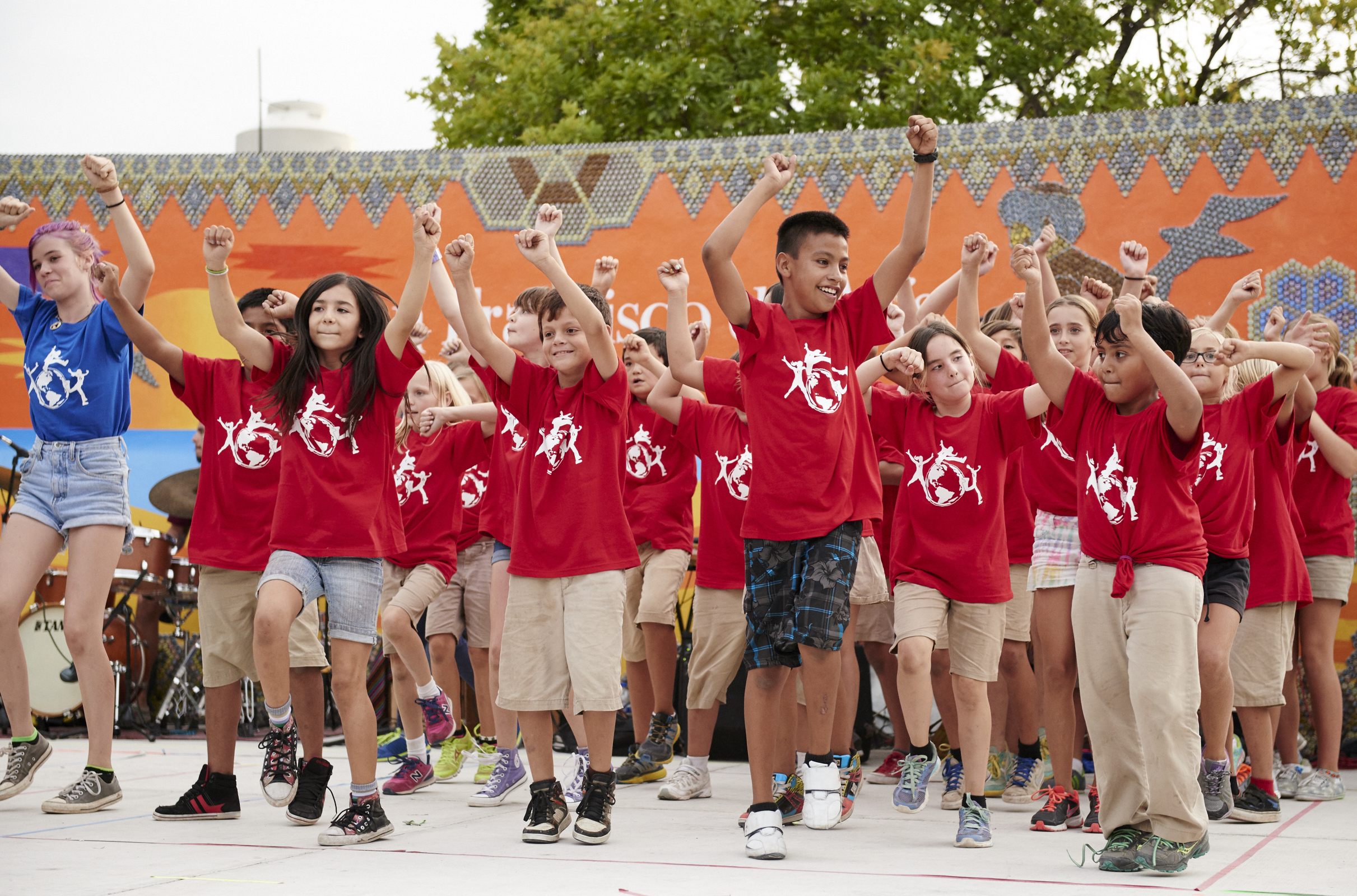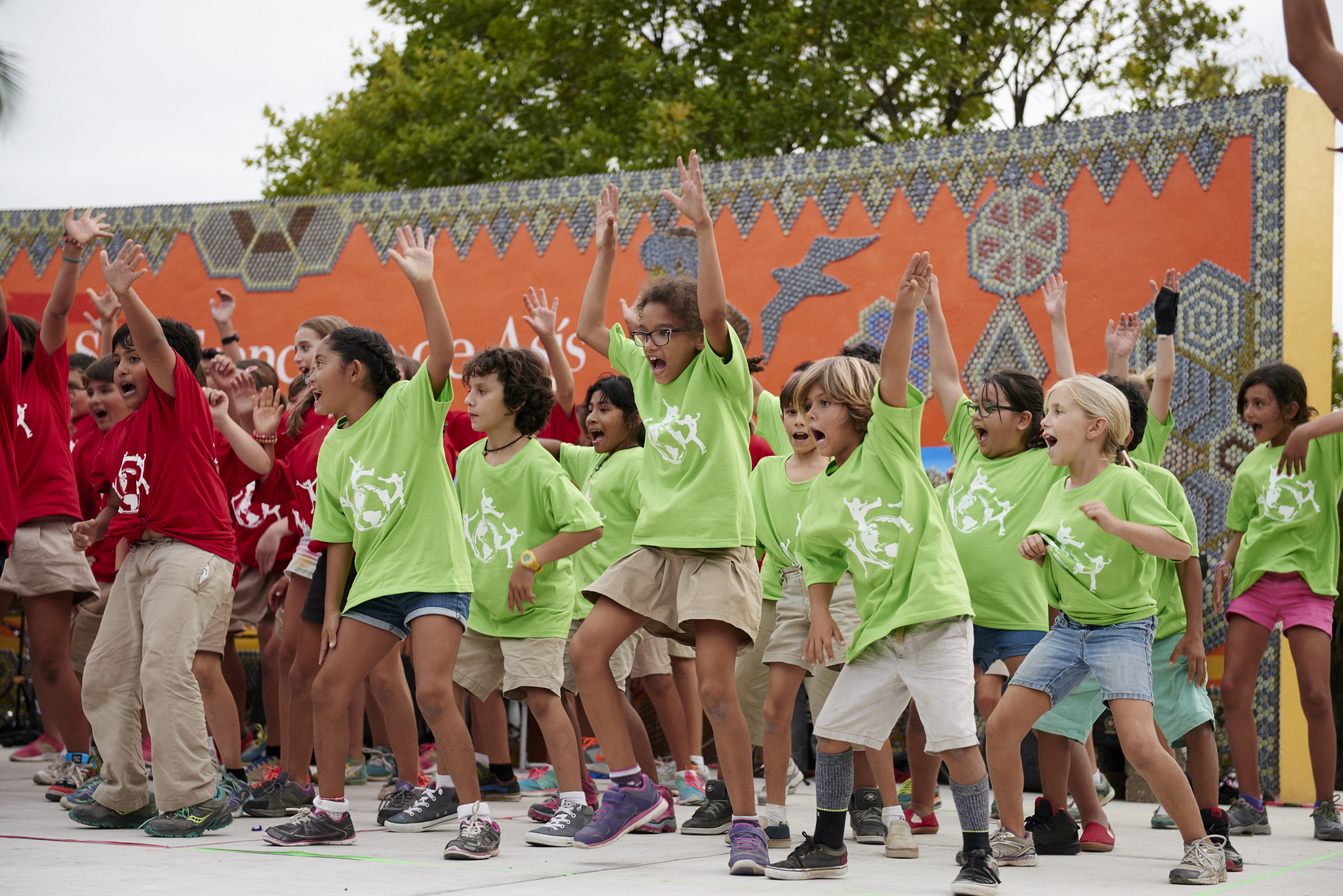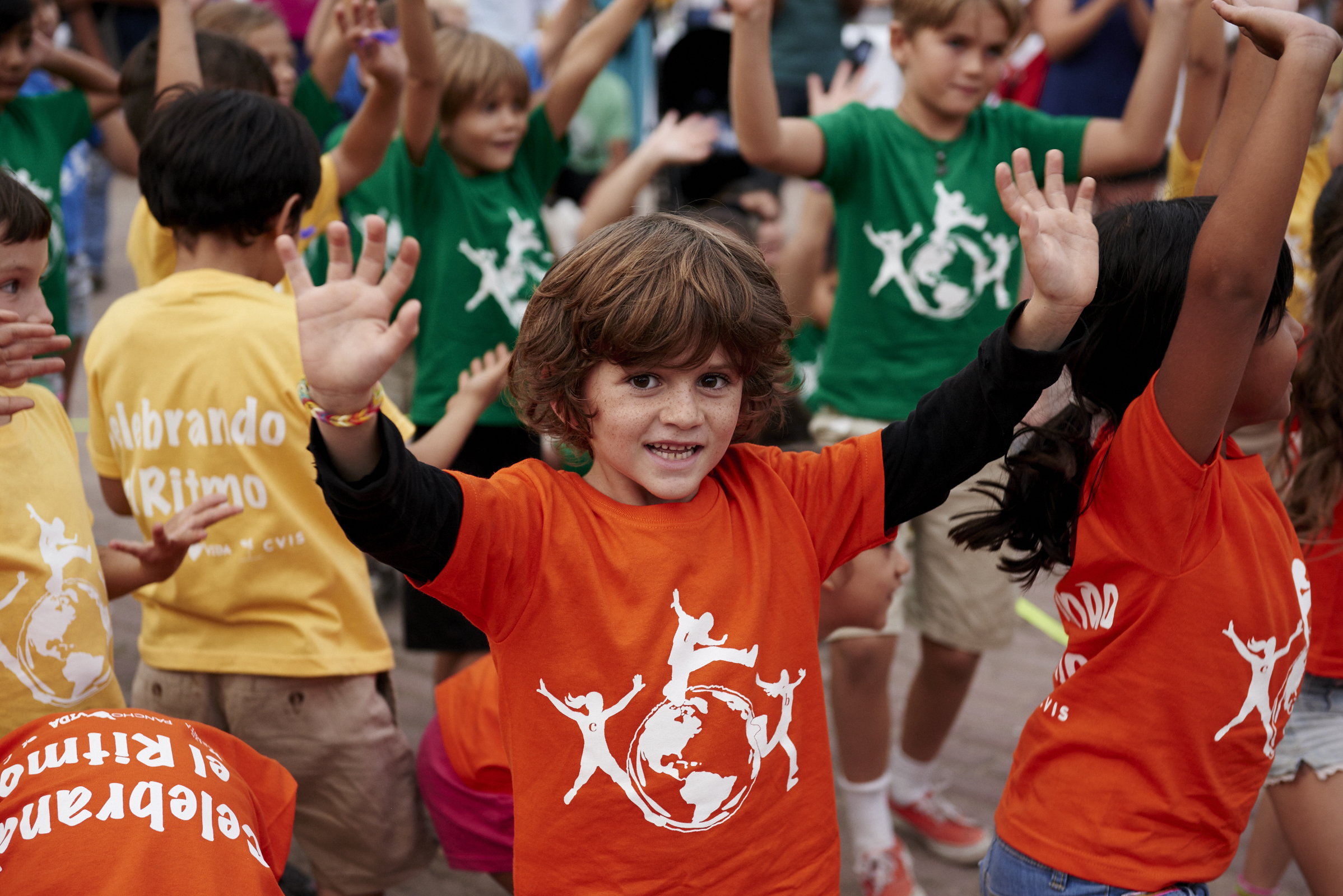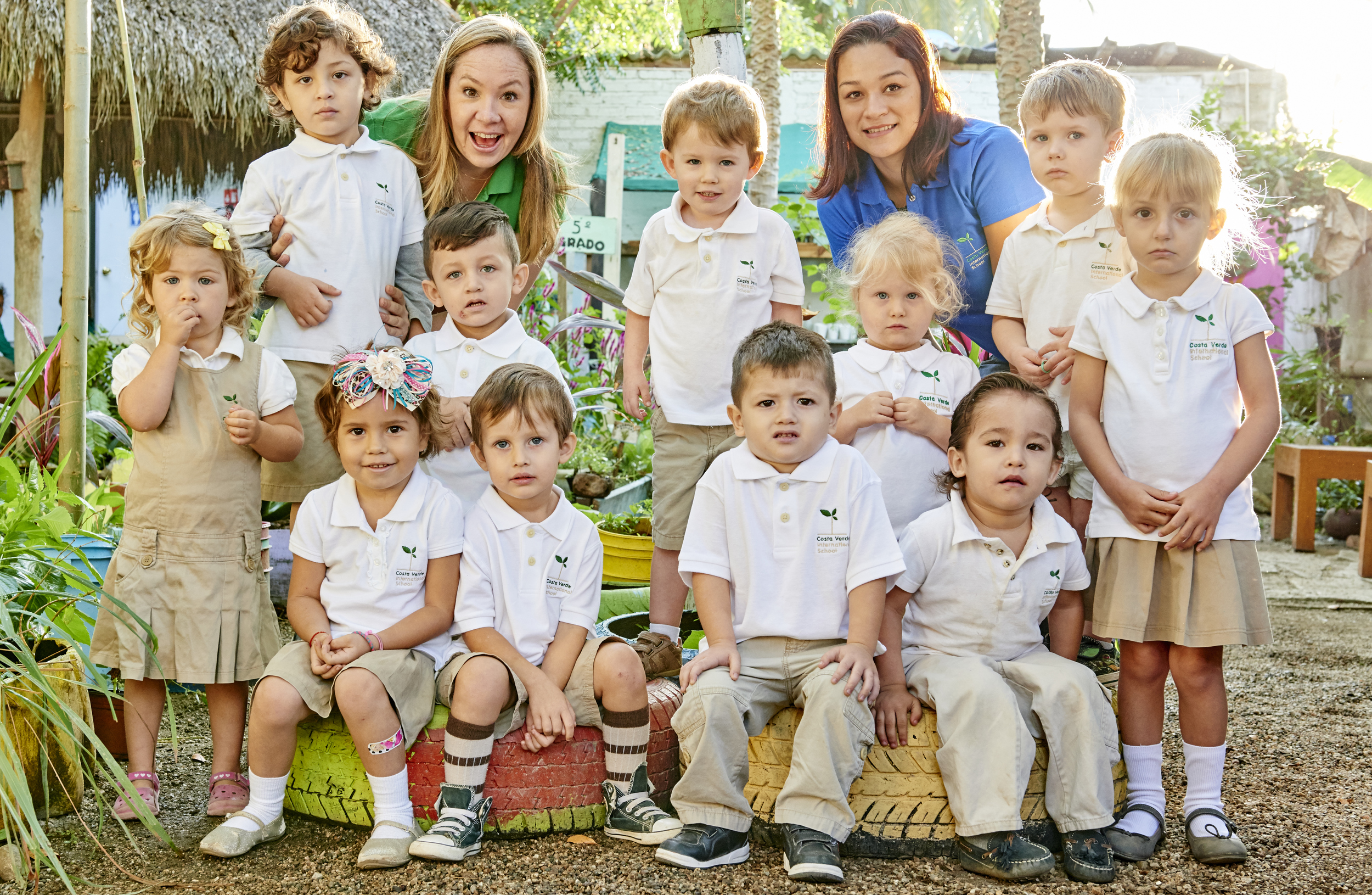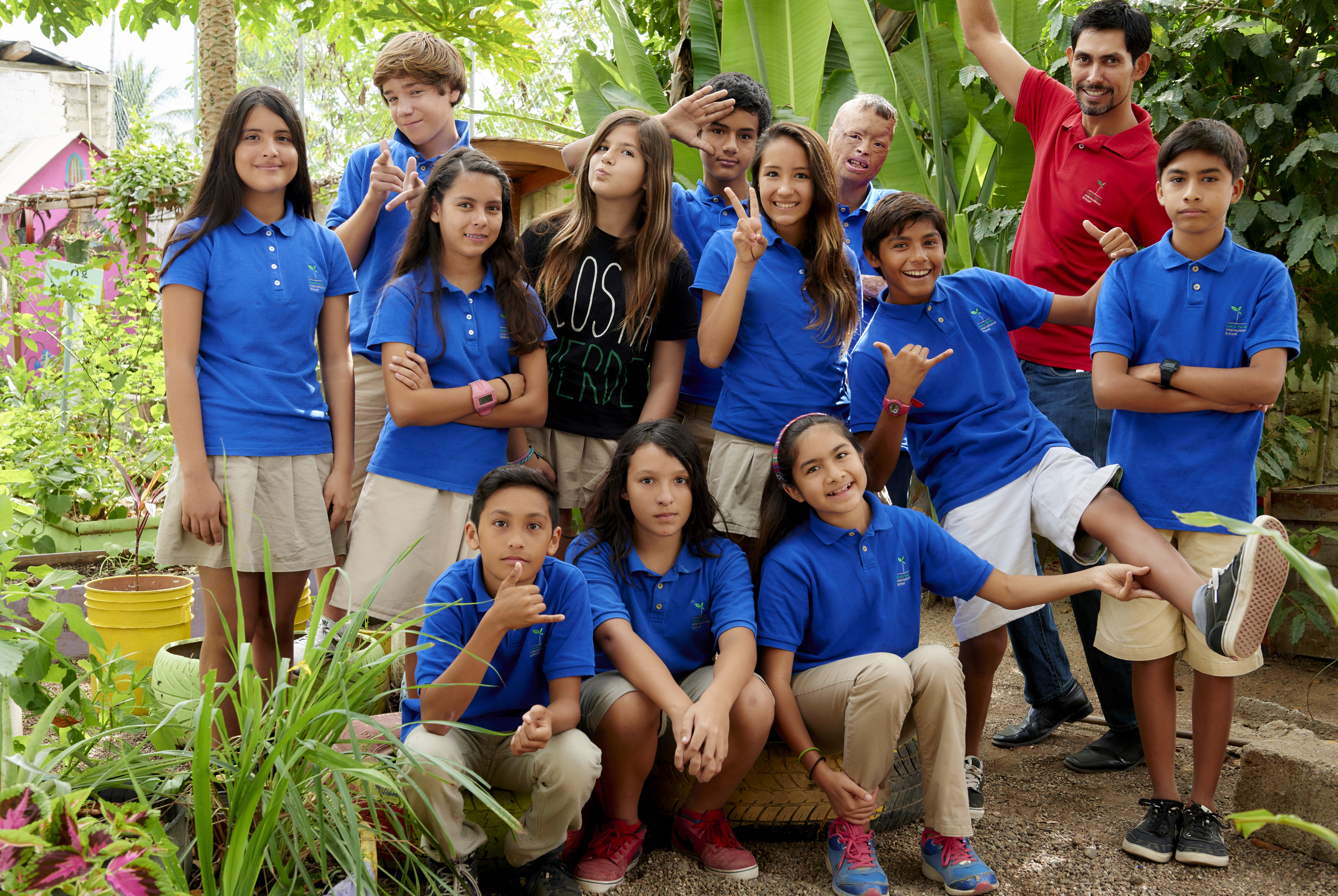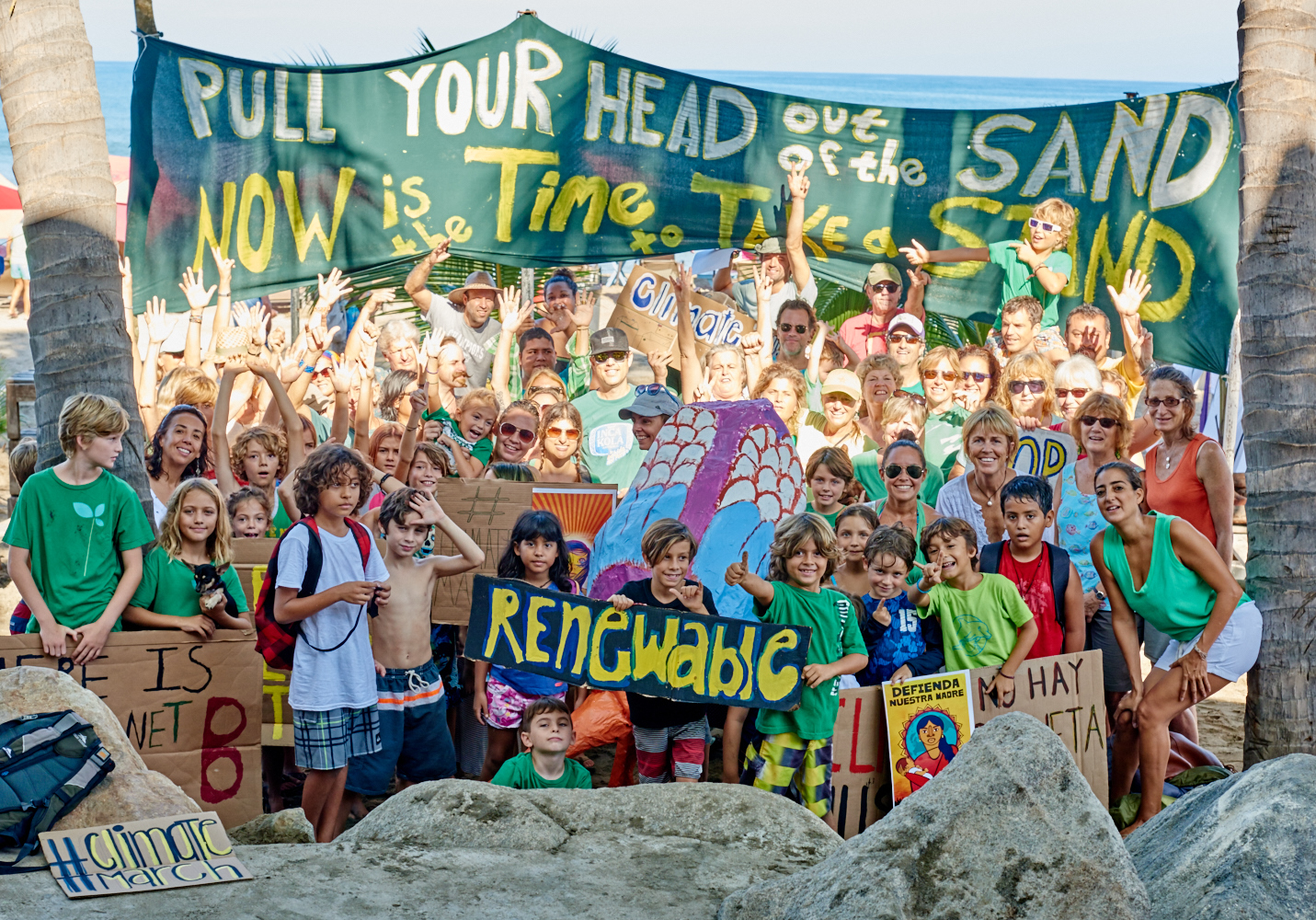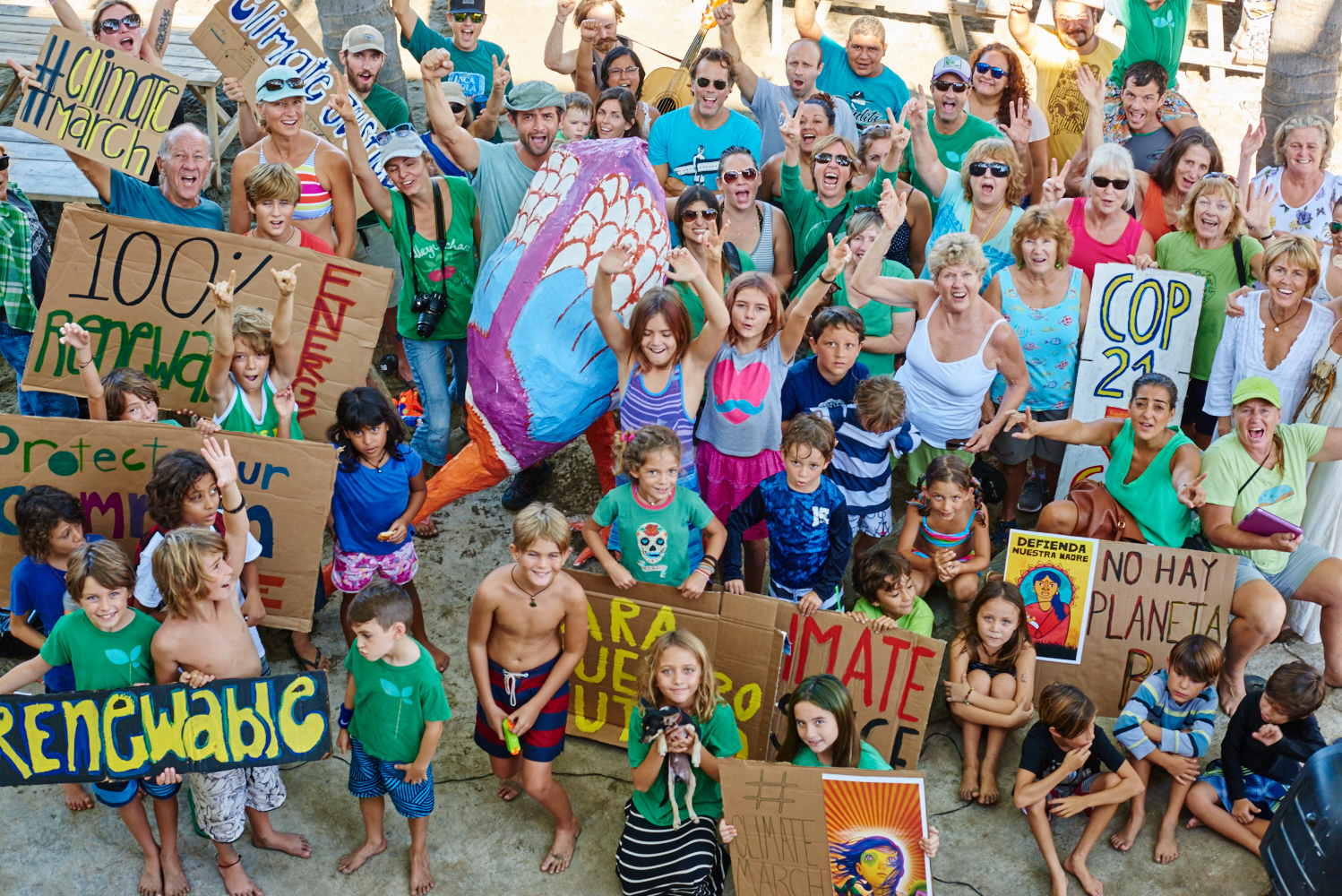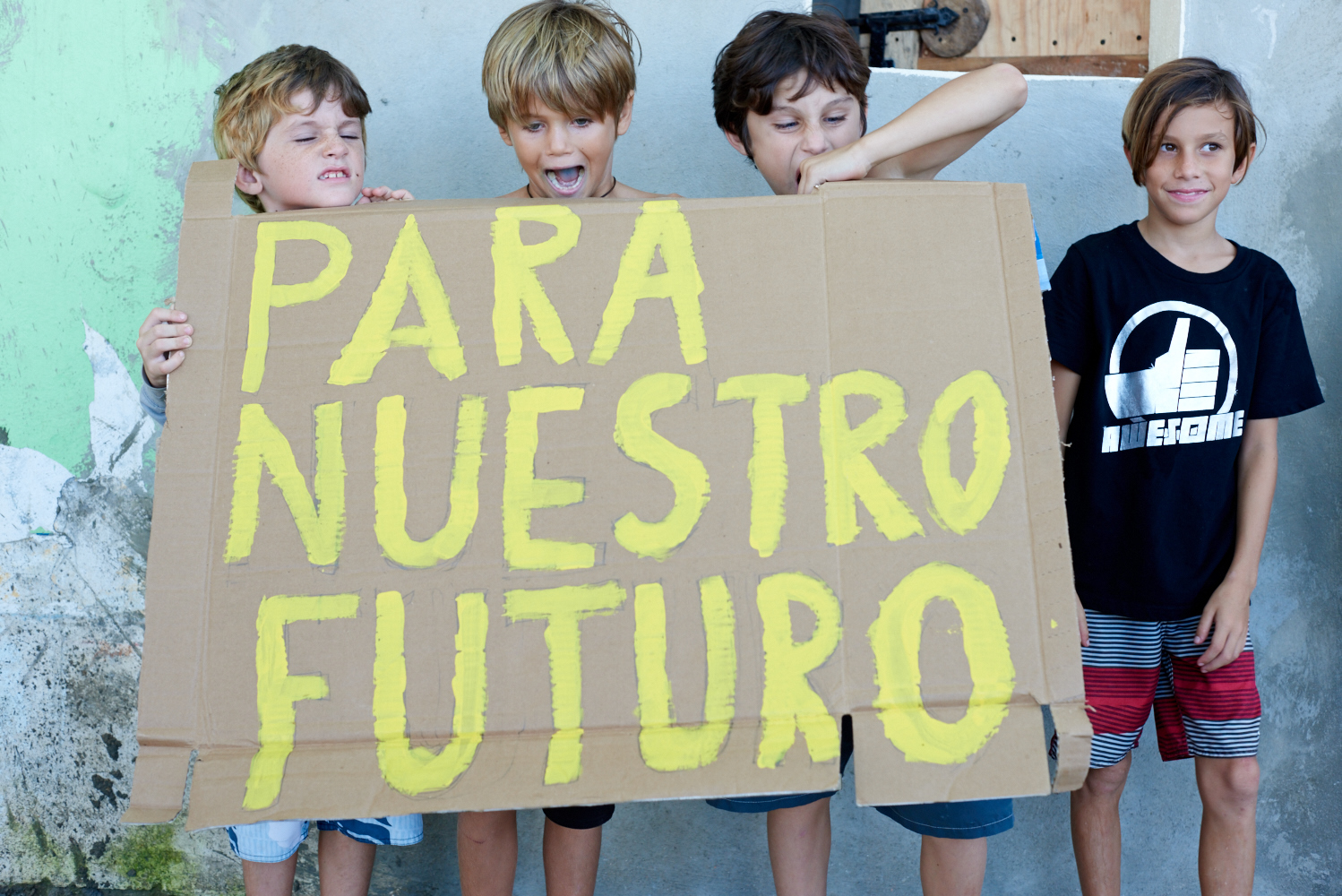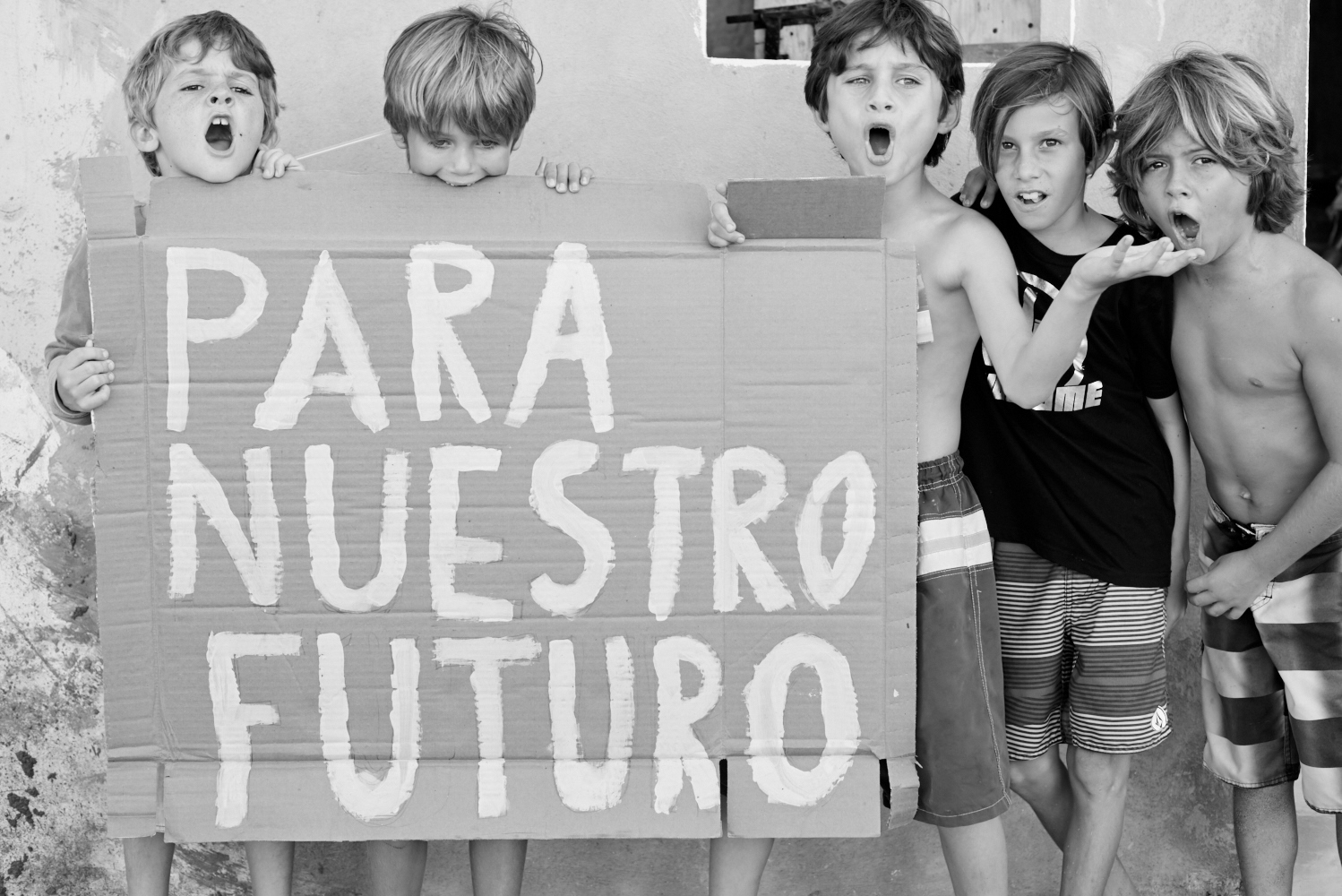What is the story of CVIS?
In 2008 a group of parents banded together to create the Costa Verde International School. Their children were just old enough to move beyond the preschool they had attended and there were few viable options. The local public school was plagued with issues of overcrowding, lack of second language support, absence of learning materials, limited hours, and underpaid and undertrained teachers. Other options were available in Bucerias (30 minutes away) and Puerto Vallarta (45 mintues away), but the parents all believed the 30-45 minute drive thru the winding hills of the jungle every day was potentially dangerous and certainly more time than they wanting their children in the car each day. It simply didn't feel right!
Given the philanthropic nature of the founders, they did not want an elitist private school. The corporation that was created to start the school was done as an “associadad civil” (similar to a non-profit corporation in other countries) in order to ensure that all profits the school produced would be put directly back into education. They wanted the school to give back to the community by establishing an extremely high rate of scholarships for locals and by spreading a vision of ecology to its students and families. Future plans were created to include a Community Center and a Sustainable Resource Center. These plans are still part of the vision of the school!
The founders enlisted an expert in school administration, Melody, to ensure the school met all the rigid Mexican education regulations. Adrianna was assigned as Director for the budding school and worked with Melody to hire teachers, train staff, create administrative procedures, implement curriculum and standards. They were crucial in developing the ecological and humanitarian aspects of the school.
However, another hurdle lay in front of the founders. The donated site they had chosen to start building on was not given the zoning permission required. Eventually, a temporary site was found, the current location at Avenida Revolucion #3, and work began remolding the existing structures into classrooms. Without the presence of an investor, the school had to rely on its grass roots support. Fundraising began immediately and there was overwhelming support from the community and future CVIS families. The Founders were able to give the final generous financial push to get the doors open by the beginning of the school year in 2008.
In the fall of 2008, during the first week of school there were approximately 35 students split among the 6 different classrooms from pre-k to the 4/5/6 combination class. By the end of the first year the school boasted double that number, 75 students. Over the next few years the population rose slightly to 80, 90, 92, and then in 2012 with the opening of our middle school, numbers went even higher. Last year, in 2013-14, just over 130 students attended CVIS. In 2014-2015, there were approximately 160 students enrolled.
Can you give me a quick overview of the school?
CVIS is a bilingual/dual immersion school. We have classes from pre-school (3 year olds) through Grade 9. Each of the primary classes (grade 1-6) have two teachers, one native Spanish speaking and one native English speaking. The children spend half the day immersed in Spanish and the other in English.
In the Spanish-speaking classroom, students study Spanish, Spanish as a Second Language, History and Civics. In the English-speaking classroom they study English- Language Arts, Math, Science, and English as a Second anguage. Additionally students have classes in eco-education, art, and physical education. When available through work trades with parents or community members we are able to offer yoga and surfing (Grades 4, 5, and 6 only).
At this time, we have 161 students. 45% of those students are international students (mostly American and Canadian) and the remaining 55% local Mexicans. We offer second language support for both the non-English speaking and non-Spanish speaking students.
For Kindergarten parents: Our kindergarten program consists of three grades K1, K2, and K3. Students are 3 years old in K1, 4 years old in K2, and5 years old in K3. While each class has one designated teacher, students in all three grades are involved in learning activities with each of the kinder teachers. In kinder, especially, we believe learning happens through play-based activities and our teachers are encouraged to create learning opportunities that are fun, stimulating, and provide the students with rich experiences.
Our community is diverse and full of creative, artistic, caring, compassionate, and hardworking people. There is a wonderful sense of community in our school, and the student body is unique blend of cultures.
What if my child is not bilingual?
We have many children who start at CVIS and speak only one language. Our teacherswork hard to accommodate students when in a class which is being taught in their second language. Additionally we have very strong English as a Second Language (ESL) and Spanish as a Second Language (SSL) programs and students needing language support are supported by the teachers of these programs. Most support comes in the form of small group pull out session.
How is the school bilingual?
CVIS is a dual immersion school in Grades 1-9, and a bilingual school in our Kinder program. What’s the difference? All dual immersion programs are bilingual, but not all bilingual programs are dual immersion. In our case dual immersion means that 50% of each day is taught in English (English reading and writing, Math, Science, Environmental Awareness), and 50% of each day is taught in Spanish (Spanish reading and writing, History, Geography, Civics and Ethics). The Kinder program is bilingual because, while both languages are used throughout the day, it is not necessarily a 50/50 split. Children immersed in both of these environments very quickly develop their second language skills.
In Grades 1-6 teachers teach in pairs: Grades 1and 2, 3 and 4, 5 and 6. In each pair one of the teachers provides all the English instruction and the other teacher provides all of the Spanish instruction. Students spend a half day in each of these classrooms, and teachers work together to coordinate themes and teaching approaches.
What curriculum does the school follow?
The curriculum at CVIS is driven by progressive principles. We believe that classrooms must be caring and supportive spaces in order for kids to learn. We think learning happens when children feel supported and when they are engaged in learning activities that are authentic, challenging and draw on what kids know and bring to the classroom. We are holistic in our approach which means we find a healthy balance of academic and physical challenge, and well as supporting the inter and intra personal development of each child. We believe wholeheartedly in child centered education which means we acknowledge the strengths and passions of our students, listen to their interests and desires, and we use this information to guide our teaching.
CIVS curriculum draws primarily from the standards set by the Mexican government. The governing body is known as SEP (Secretariat Educacion Publica). SEP sets all learning standards and tracks school adherence to these standards. As a school in Mexico we must follow these standards. As we are an international school that draws students from outside of Mexico we also draw curriculum from the United States’ Core Curriculum. Generally standards from Common Core are drawn upon when a student shows mastery of the SEP standards and needs to be furthered challenged in a particular subject.
Subjects taught in Primary (Grades 1-6)
*Math
*English Reading and Writing (as a subject, not as a second language)
*Spanish Reading and Writing (as a subject, not as a second language)
*Science
*Environmental Science
*History
*Geography
*Civics and Ethics
*Art
*PE
Subjects taught in Middle School (Secundaria, Grades 7-9):
*Math
*English Reading and Writing (as a subject, not as a second language)
*Spanish Reading and Writing (as a subject, not as a second language)
*Science
*Environmental Science
*History
*Geography
*Civics and Ethics
*Art
*PE
In addition to the basic curriculum what else is taught?
Other offerings MAY include yoga, surfing (Grades 4-6 only), and swim lessons, but these classes are generally offered as part of a work exchange. As a small school we look to enrich our program in many ways. One way is through work exchange (there are very limited numbers of these, and only given in cases where a financial need is established), and when we have the opportunity to offer yoga, surf, or other programs via this program we do so. You can check with the admissions coordinator in June to confirm which programs will be offered.
Do you have a lunch program?
In 2013 the school started a lunch program on campus. We are proud to say it has been a huge, and healthy success. Meals are prepared fresh each day and include an entrée, several servings of fruits and veggies, and an agua fresca (freshly made drink that combines water and fruit—delicious!). Every day vegetarian and vegan options are available. Lunches can be purchased on a daily, weekly, or monthly basis.
We subscribe to a No Waste lunch policy which means if it can’t be recycled or composted, it doesn’t make the menu. We also ask that parents who are sending lunches abide by the same policy when packing their children’s lunches.
What if my child has special needs?
We are indeed an alternative, holistic school and we are proud that we are able to support many different types of learners. In a perfect world we would have the resources and the teachers who could accommodate any student, regardless of their challenges. However, we are also aware that we are not a school for every student, and students with high levels of special needs may not be able to have their needs met on our campus. Students with significant learning disabilities that have resulted in significant academic impairments, students with significant behavioral issues, and students who need extensive occupational and/or speech therapy may not be the best fit for CVIS. We are happy to speak with all families who are considering CVIS who have questions about the suitability of CVIS for their child. Please contact the School Director, Andy Slavin, directly and he will make time to speak with you. Andy has extensive experience with all different kinds of learners and he will be able to give you an honest assessment of whether or not CVIS will be able to meet your child’s needs. First and foremost we want to be sure that all students find the school that can best meet their needs!
In what ways is the school ecological and/or sustainable?
The school strives to live the ideals of sustainable practice and ecological responsibility. Our No Waste lunch policy is one example, as are our weekly Environmental Science classes for all students in primary and middle school. All classes, including Kinder classes, participate in Jane Goodall’s Roots and Shoots (WEB SITE) program through involvement in a yearly project focussed on people, animals, or the environment. Examples include: An awareness campaign to reduce the use of plastic and styrofoam in the local community, planting new plants and trees on the local plaza and maintaining the garden, visiting the local primary school each week to share the joy of science explorations (the local school has no science program), and working to strengthen the local recycling program through an awareness campaign and the creation of new receptacles.
The campus is continually expanding it’s use of recycled and up-cycled items, and it is home to a huge variety of fruting plants and medicinal plants. We also have an extensive compost which helps to provide the soil we need to maintain our planing beds and to share with the local community.
These are just a few examples of how the school strives to be ecologically minded and sustainably rooted in the community. New ideas spring forth every day and we work with our students to continue along this important path.
How do you address the different skill levels of students coming from multiple countries?
While we are not able to teach all the standards from the different countries and provinces represented in our school, teachers at CVIS are expected to meet each child where they are academically. This means that teachers are prepared to differentiate instruction for students who need extension and for those who may need remediation.
We do not teach with other curriculums outside of SEP and Common Core, and parents hoping to have their children keep up with standards from their home country may have to do some schooling outside the school day. Truly this is the only way to assure a student is ready to return to their home school.
What is the minimum enrollment period?
Beginning in August of the 2015-16 school year minimum enrollment will be one semester. Semester 1 begins in late August and finishes mid December, and Semester 2 begins the first week in January and ends in mid July (dates are subject to some variation as per the Mexican governing body of education, SEP).
Do students at CVIS wear uniforms?
Students at CVIS wear uniforms as is the custom in Mexico. We believe that a school dress code enhances the learning experience at school, promotes a positive school ethos and a sense of identification and loyalty to the school, and that it creates a positive image for the school in the local community.
Cost of the uniforms is not included in tuition or inscription fees. For more information about costs of the uniforms (which must be paid for in cash at the school) please contact Yaneth: yaneth@colegiocostaverde.com.
How is grade level placement decided?
Two bits of important data are taken into consideration when making class/grade placement: Birthdate and most recently completed grade.
In Mexico the cut off date for grade placement is December 31. Any student who turns the age appropriate to a particular grade prior to December 31 is placed in that grade. See the table below for placement information.
Age as of December 31 - Grade Placement
3 - Kinder 1*
4 - Kinder 2*
5 - Kinder 3
6 - Grade 1
7 - Grade 2
8 - Grade 3
9 - Grade 4
10 - Grade 5
11 - Grade 6
12 - Grade 7
13 - Grade 8
14 - Grade 9
*Note: Must be potty trained
The other factor that is always considered is the most recently completed grade. For instance, if a child has just completed Grade 1 in Canada, but who qualifies to be in Grade 3 this year (due to birthday) will not be placed in Grade 3 because that child has not completed Grade 2. Conversely, a student who has recently completed Grade 2 but is not, by Mexican rules, the proper age for Grade 3, will not be prevented from entering Grade 3.
Is there financial aide or scholarships?
Scholarships are only available to local Mexican scholars and take the form of full scholarships, partial scholarships, work trades, and the adopted scholar program (students sponsored by private donors or businesses). The scholarship application process begins in January for the following school year, and scholarship awards are communicated to families by June.
How can I donate?
Costa Verde International School relies on the generous donations to bring an alternative education choice and environmental awareness programs to the people of Sayulita and the surrounding area. The scholarship program is 100% funded by donations and it can only exist with your help. Thank you!
Fundraising is done through a variety of events in the year and online donations. If you are unable to attend one of our fundraisers, you may contribute by making a direct donation. We are able to accept donations through our 501(c) non-profit organization in the United States, "Ninos del Sol Inc." A tax receipt will be emailed or mailed for each donation made in the US. We are also able to accept tax deductable donations in Canada. Please contact us for more information.
I have specific questions, who should I contact?
Admissions, enrollment, uniforms: yaneth@colegiocostaverde.com
Curriculum and all other information: andys@colegiocostaverde.com




